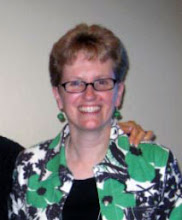
I found it really hard to write about faith and disability—not out of fear or embarrassment, but because the words I could put together were just pitiful. But I have been challenged…. So here goes:
In my view God fills my world and my life like oxygen and faith is like breathing. Sometimes I breathe easily, sometimes I gasp and pant. And ‘when my cabin experiences sudden pressure changes and the masks drop down from the ceiling I have to remember to put mine on, then help others and most of all trust that it’s working even if the bag does not inflate completely.’
And on top of this I believe God knows my name, loves me (and everyone else) and has plans and intentions for me—which is all blended together somehow with free will. (See why I find it hard to write about this??)
The day Jenn was born we were shocked by her diagnosis and awed by the “coincidences” that surrounded us.
• Like my first hospital roommate checking out of the hospital AMA. My next roommate had a job working with adults with Down syndrome—a job which she LOVED!
• Like the way the Bible study I’d joined about a month prior allowed me to get to know 2 moms of kids with disabilities before I desperately needed them for their expertise.
• Like the friend who had received some inspirational writings about Down syndrome from someone she knew 2 days before my daughter arrived—for no reason that was apparent at the time.
• Like the doctor who said some of the most empowering words I’d ever heard in my life. I met him in the middle of the night when he was checking on my daughter—he and another doctor had switched call for that night.
• Like the magazine that had come with my diaper delivery which had an article about having babies with special needs—where I found the phone number for the National Down Syndrome Society (who gave me the number for my local group.)
• Like a whole host of other large and small events that kept catching our breath…
Do I believe that Jenn is here for a reason? Yes. Do I understand how disability fits into God’s plan? No, I confide in God, God does not generally confide in me!!! But I do believe disability is part of the plan.
In fact I believe that my daughter—like everyone else—is made ‘in the image and likeness’ of God. There are people who do not recognize this in her—or others. This indicates a deficit in them, not her. Period.
Have there been difficulties, challenges and struggles? Well yes, at times. And there has also been growth, new relationships and opportunity…
Why us? Why her? What did we do to deserve (or earn) this?
Absolutely nothing.
That’s what grace is: a gift you don’t deserve.
Click here to read about a book that’s a great resource for families, churches and agencies who support people with disabilities in living out their faith. You can also enter a drawing for the book signed by the author.
Image--a burning candle--from here.












